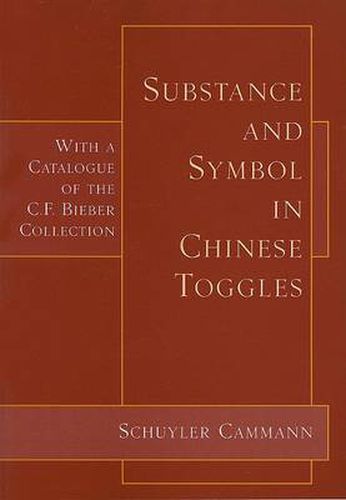Readings Newsletter
Become a Readings Member to make your shopping experience even easier.
Sign in or sign up for free!
You’re not far away from qualifying for FREE standard shipping within Australia
You’ve qualified for FREE standard shipping within Australia
The cart is loading…






Although the Japanese belt ornaments known as netsuke have long been poplar with collectors and much written about, the Chinese toggles which preceded them have gone little noticed. Professor Cammann’s long out-of-print work was the first book in any western language to discuss them. Using examples from the C. F. Bieber collection and other private and museum collections, Cammann discusses every aspect of these toggles, from the selection of materials through the methods used to make them and choices of motif and decoration. Toggles were chiefly made and worn by common people and thus form part of China’s rather neglected folk art tradition. Materials were chosen for specific medical or magical reasons assumed to make them efficacious as amulets. Readers are introduced to figures and motifs of Chinese folklore as well as more conventional symbols from the Buddhist and Taoist religious traditions. Mongolian and Tibetan toggles are also discussed, both in terms of their own traditions and contrasted with the more familiar Chinese and Manchu examples. With over 186 illustrations and a glossary of Chinese and Japanese terms, this detailed and scholarly work will appeal to students and connoisseurs of both netsuke and toggles, as well as East Asian arts and crafts in general.
$9.00 standard shipping within Australia
FREE standard shipping within Australia for orders over $100.00
Express & International shipping calculated at checkout
Although the Japanese belt ornaments known as netsuke have long been poplar with collectors and much written about, the Chinese toggles which preceded them have gone little noticed. Professor Cammann’s long out-of-print work was the first book in any western language to discuss them. Using examples from the C. F. Bieber collection and other private and museum collections, Cammann discusses every aspect of these toggles, from the selection of materials through the methods used to make them and choices of motif and decoration. Toggles were chiefly made and worn by common people and thus form part of China’s rather neglected folk art tradition. Materials were chosen for specific medical or magical reasons assumed to make them efficacious as amulets. Readers are introduced to figures and motifs of Chinese folklore as well as more conventional symbols from the Buddhist and Taoist religious traditions. Mongolian and Tibetan toggles are also discussed, both in terms of their own traditions and contrasted with the more familiar Chinese and Manchu examples. With over 186 illustrations and a glossary of Chinese and Japanese terms, this detailed and scholarly work will appeal to students and connoisseurs of both netsuke and toggles, as well as East Asian arts and crafts in general.